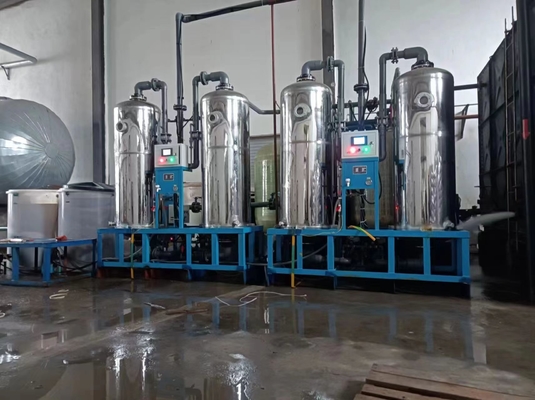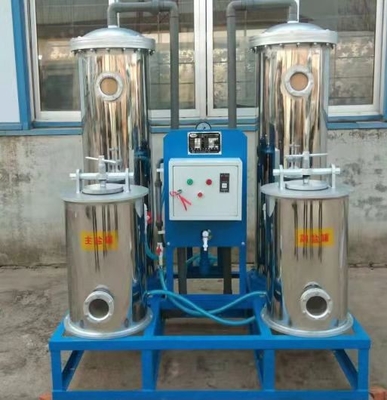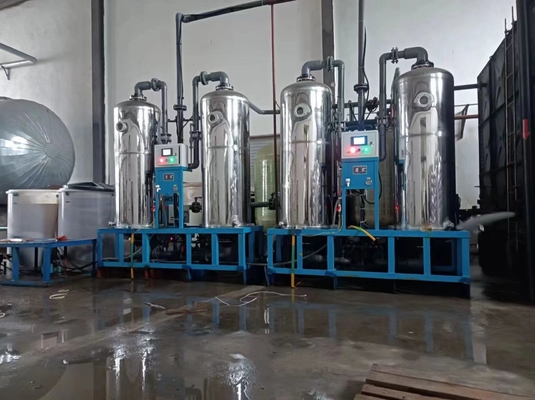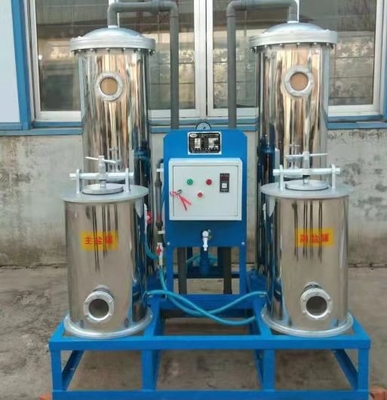-
Condensate Water Recovery Device
-
Reverse Osmosis Equipment
-
Fully Automatic Water Softener
-
Industrial Sand Filter
-
Water Supply Equipment
-
Chemical Dosing Device
-
Container Flipper
-
Container Loading and Unloading Machine
-
Truck Flipper
-
Electric Transfer Cart
-
Electronic Weighbridge
-
Mobile Loading Dock Ramp
-
Air Compressor Heat Recovery
-
Water Treatment Accessories
FRP Automatic Dual Tank Water Softener Systems 1-100T/H Capacity Carbon Steel Construction

Contact me for free samples and coupons.
Whatsapp:0086 18588475571
Wechat: 0086 18588475571
Skype: sales10@aixton.com
If you have any concern, we provide 24-hour online help.
x| Features | High Automation Level, Stable Water Quality, High Efficiency, Low Energy Consumption, Low Operating Costs. | Product Information | Automatic Water Softening Equipment - Dual-Tank, Single-Tank, Continuous Water Production |
|---|---|---|---|
| Brand | Tonglida | Application Fields | Industrial Boilers, Central Air Conditioning Systems, Heat Exchangers, Hotels, Restaurants, Food And Chemical Industries, Laundry And Dyeing, Medical And Sanitation, Etc. |
| Product Specifications | 1-100T/H | Origin | Taian, Shandong |
| Materials | Fiberglass Reinforced Plastic (FRP), Stainless Steel, Carbon Steel | ||
| Highlight | automatic dual tank water softener systems,frp 2 tank water softener,frp dual tank water softener systems |
||
Product Description:
The fully automatic water softener comes with a comprehensive automatic control system that can be customized for single-tank or dual-tank configuration based on user requirements. The system operates automatically, with one tank in use while the other acts as a backup. When the operating tank reaches the set production capacity, it automatically goes into regeneration mode, and the backup tank takes over the operation. The entire softening system operates in fully automatic mode and includes several process stages - running, backwashing, brine suction, ion exchange, forward flushing, and standby.
The raw water flows through the resin tank filled with ion exchange resin, which is equipped with an automatic control valve. The Na+ ions in the resin undergo ion exchange with the cations (Ca2+, Mg2+) in the water, resulting in the water hardness of the softener outlet being ≤0.03mmol/L. When the system reaches the set flow rate, the controller automatically initiates the regeneration process.
The main steps involved in the regeneration process are as follows:
- Backwashing: Water is directed upward through the bottom distributor to flush and loosen the resin bed, simultaneously removing accumulated suspended particles from the resin surface.
- Brine Suction Regeneration: Saturated brine solution is injected into the resin tank through the brine injector after dilution to a concentration of 5-8%. The brine solution flows downward through the deactivated resin bed, regenerating the resin and restoring its original exchange capacity.
- Exchange: The exchange process consists of two steps. In the first step, after the regeneration liquid is injected, there is still some regeneration brine in the upper space of the resin tank that has not participated in the regeneration process. To fully utilize this brine, clean water with the same flow rate as the regeneration liquid is used to thoroughly regenerate the uninvolved brine through the resin bed. This step is called exchange. In the second step, the regeneration waste liquid in the resin pores is displaced from the resin bed.
- Forward Flushing: The purpose of forward flushing is to completely remove the residual regeneration waste liquid from the resin bed and clean it until the water meets the required standards.
| Project Name | Unit | 1T/H | 10T/H | 20T/H | 30T/H | 35T/H | 40T/H | 50T/H | 60T/H | 80T/H | 100T/H | |
| Inlet pressure | mpa | 0.15-0.25 | ||||||||||
| Water production | T/H | 0.8-1.2 | 9-11 | 18-22 | 27-33 | 32-38 | 35-45 | 45-55 | 55-65 | 70-90 | 90-110 | |
| Raw water turbidity | O | ≤2 | ||||||||||
| Raw water hardness | mmol/L | ≤15 | ||||||||||
| Residual hardness of soft water | mmol/L | ≤0.03 | ||||||||||
| Self-consumption water rate | % | 4 | ||||||||||
| Power supply | Single-phase electricity 50HZ 220V | |||||||||||
| Diameter of exchange column | Stainless steel head | mm | ∅650 | ∅750 | ∅750 | ∅900 | ∅900 | ∅1000 | ∅1200 | ∅1400 | ||
| Ordinary head | mm | ∅160 | ∅420 | ∅640 | ∅760 | ∅760 | ∅890 | ∅900 | ∅1000 | ∅1180 | ∅1400 | |
| Resin tank height | mm | 1800 | ||||||||||
| Inlet and outlet water pipeline | Solenoid valve | mm | DN15 | DN65 | DN65 | DN65 | DN80 | DN80 | DN100 | DN125 | DN150 | |
| Valve body | mm | DN20 | ||||||||||
| Flow meter | L/H | 60 | 160 | 400 | 600 | 600 | 1000 | 1000 | 2000 | 2000 | 2500 | |
| Resin filling capacity | Solenoid valve | KG | ||||||||||
| Total weight of equipment | KG | |||||||||||
| Salt tank size | Self-processing | mm | 225*650 | 410*650 | 640*750 | 640*750 | 640*750 | 700*850 | 760*800 | 760*800 | 890*800 | |
| Purchase from outside | 800L | 1000L | 1000L | 1500 | 2000 | |||||||
Features:
Our technology boasts a highly automated system ensuring efficiency and stability in water quality management. With our advanced setup, your system maintenance is kept to a minimum, resulting in reduced operating costs for your business.
Our innovative technology also incorporates low energy consumption features, ensuring that your electricity bill is kept at a minimum while still providing high efficiency results. Our setup is designed to improve the overall efficiency of your system while reducing your operating costs significantly.
The automation level of our technology means that less human intervention is necessary, ensuring that your system operates smoothly with minimal supervision. This also results in a more stable water quality and reduces the likelihood of any unexpected changes that could negatively impact your business.
With our system, you can achieve high automation levels, stable water quality, and high efficiency—all while enjoying low energy consumption and operating costs. Choose our innovative technology today and realize the benefits of efficient, cost-effective water management for your business.
Technical Parameters:
Automatic Control with Simple and Reliable Operation
Our water softening systems offer automatic control with a simple and reliable operation. You won't have to worry about manually adjusting settings or performing complicated maintenance tasks. Our advanced control system ensures your water is always at an optimal level of softness.
Strong Adaptability to Hard Water
Our water softening systems have an impressive level of adaptability. They are capable of softening water with high hardness up to ≤15mmol/L to residual hardness ≤0.03mmol/L in a single pass. This means even if your water is extremely hard, our system is up to the task.
Efficient and Affordable
Our water softening systems have a short regeneration time, low resin consumption, and low salt consumption. These features make them incredibly efficient and affordable over time. Additionally, our systems ensure stable water quality, and low operating costs.
Compact, Lightweight Equipment
We designed our water softening systems to be compact and lightweight. Their rational design allows for a small footprint, which is ideal for use in small spaces. This feature also makes it easy to move the system if needed.
Quick and Easy Installation
Our complete water softening machine is delivered from the factory, and installation is simple. Only the inlet and outlet pipes and power supply need to be connected to start water production. Our system can be up and running quickly, so you can start enjoying soft water right away.
Applications:
The automatic water softener has a wide range of applications in both domestic and industrial settings. It is commonly used for the circulating makeup water in various equipment such as steam boilers, hot water boilers, heat exchangers, steam condensers, air conditioning systems, and direct-fired equipment and systems. This ensures that the water used in these systems is free from the harmful minerals and impurities that can cause damage to the equipment and reduce efficiency.
Additionally, the use of automatic water softeners extends beyond industrial applications and can also be used for domestic water treatment. It is widely used in sectors such as food, electroplating, pharmaceuticals, chemicals, printing and dyeing, textiles, and electronics. In addition, it is used as a pre-treatment for desalination systems.
The water softening process can significantly reduce the hardness of the produced water. Water softeners can be single-stage or multi-stage depending on the specific requirements of the application. This ensures that the produced water is of high quality and free from the harmful minerals that can result in scaling and corrosion in equipment and systems.






